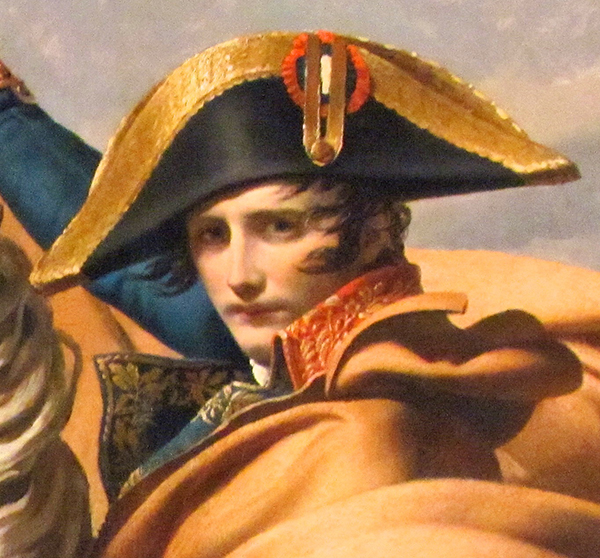
In this week’s edition of “100 Objects”, we’re looking at some of history’s most famous swords.

#19 The Blade That Made Europe
Charlemagne, the storied 8th Century Frankish ruler, conquered most of Western Europe at the tail end of the so-called Dark Ages. And the sword that supposedly helped him do it, the legendary blade known as Joyeuse or “Joyful”, can still be seen in The Louvre in Paris. For centuries, the weapon was considered sacred, having reportedly been forged on top of steel taken from the tip of the Spear of Longinus, the mythical Roman lance that pierced the side of Christ during the crucifixion. Poets held that the glint from Joyeuse was bright enough to blind the king’s enemies. Even better, its holy properties made its bearer impervious to poison. Not surprisingly, Joyeuse (at least the sword the French thought was the real deal) became a much venerated relic during the Middle Ages. Beginning in the 13th Century, the ancient blade featured prominently in coronation rites of France’s rulers — a tradition that continued right up to the 1825 crowning of Charles X. There’s even a town in the south of the country named for the weapon. Over the years, Joyeuse underwent a series of restorations and upgrades. According to the Louvre, the pommel, cross guard and grip were all completely replaced between the 10th and 13th centuries. The steel itself was refurbished in the 19th Century, although portions of the original 3.6-pound, three-foot sword reportedly date back to the Early Medieval period. A second weapon believed to have been also owned by Charlemagne is on exhibit in Vienna.

#20 Caesar’s Sword
Sadly, the ages have been far less forgiving to another ‘imperial blade’. The weapon known as Tiberius’ Sword or Mainz Gladius has been part of the British Museum’s collection since the 1860s. Unearthed in Germany 150 years ago, the much-deteriorated weapon is believed to have been made in the early 1st Century. While it’s named for the second Roman emperor, the nearly two-foot long shiv was actually the property of some high-ranking military official who would have had it custom made to celebrate a victory somewhere in Central Europe. The accompanying scabbard, which is in considerably better shape that the sword itself, is engraved with likenesses of both Augustus Caesar and his step-son Tiberius — hence the name. A replica of the same sword, which shows how the weapon would have looked in its prime, hangs in the Romano-Germanic Central Museum in Mainz, Germany.

#21 The Sword of Scotland
Another famous sword, this one believed to have belonged to William Wallace, is on display in Sterling, Scotland. Housed at the Wallace Monument, the unusually long, two-handed claymore was reportedly used by the famous 14th Century warlord and patriot in several of his battles. It fell into English hands when Wallace was captured in 1305. The sword was then claimed by the lord of Dumbarton Castle. It remained at the ancient fortress for centuries. Scotland’s King James IV ordered the aging weapon restored in 1505, particularly its rotting hilt, scabbard and belt, which were supposedly made with the flayed hide of the dead English commander Hugh de Cressingham. During the 19th Century, the Gaelic relic was transferred to newly built monument. To this day, many dispute the authenticity of the weapon. Some cite as evidence the fact that the sword is more than five feet in length, meaning that any user would have had to have been more than six-and-a-half-feet tall – almost unheard of for a medieval Britton. Others cite the sword’s design as problematic, specifically its lack of a fuller or “blood grove” running the length of the blade — a design feature used since ancient times to lighten weapons. The fact that the Wallace sword lacks such a feature suggests it might have been more of a ceremonial or decorative item rather than a combat arm. Yet, some who have studied the artifact point out that it seems to have been re-forged from three different blades, one of which might very well have been carried into action by Wallace. For those unable to make it to Scotland to see the weapon itself, replicas of the famous blade abound online.
SOURCES
http://www.myarmoury.com/feature_charlemagne.html
http://www.examiner.com/article/the-history-of-charlemagne-s-sword-joyeuse
http://maisoncharaix.com/en/the-history-of-joyeuse/
http://en.wikipedia.org/wiki/Mainz_Gladius
http://www.albion-swords.com/swords/albion/nextgen/sword-roman-augustus-mainz-II.htm
http://www.nationalwallacemonument.com/index.php
http://www.bbc.co.uk/scotland/education/as/warsofindependence/info.shtml?loc=sword
http://en.wikipedia.org/wiki/Wallace_Sword
http://www.theguardian.com/uk/2005/mar/31/artsnews.scotland










I know the use of ceremonial swords other than using them for decorative purpose. They are used by sikh people also known as kirpan/ceremonial swords.
Gladius Hispaniensis. You and short minded racism are hilarious.